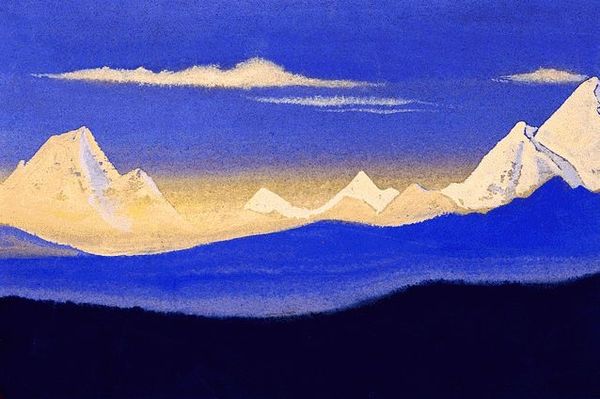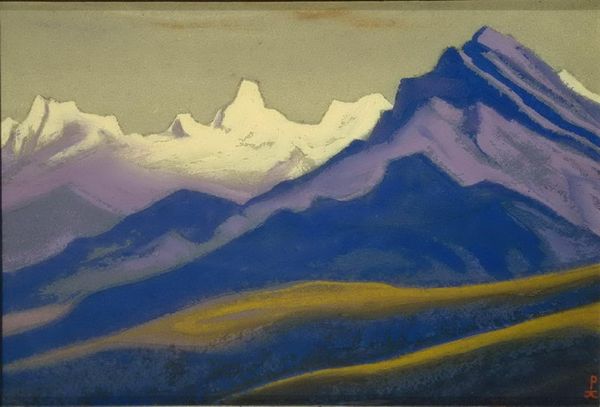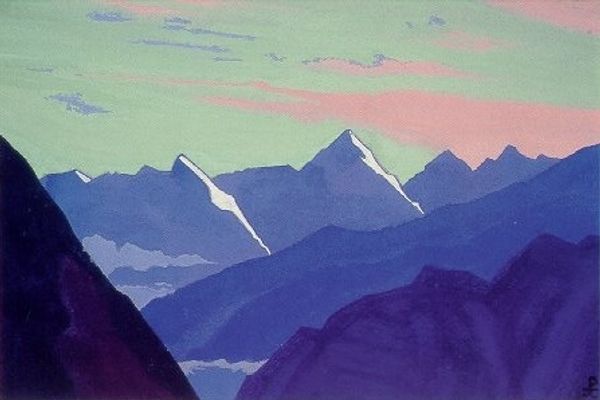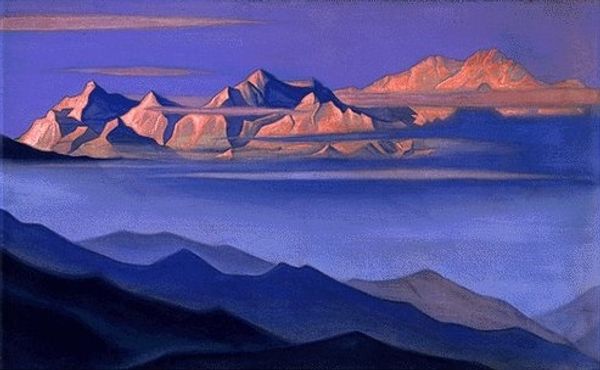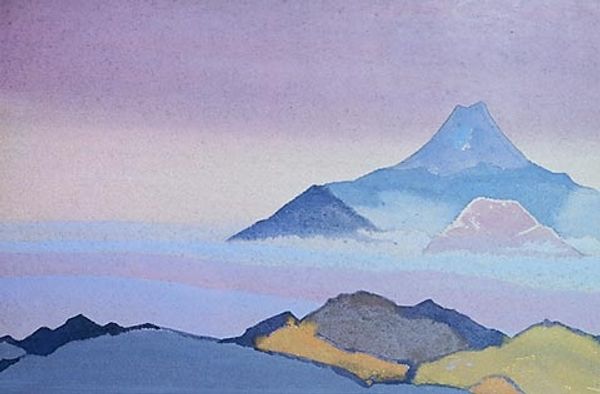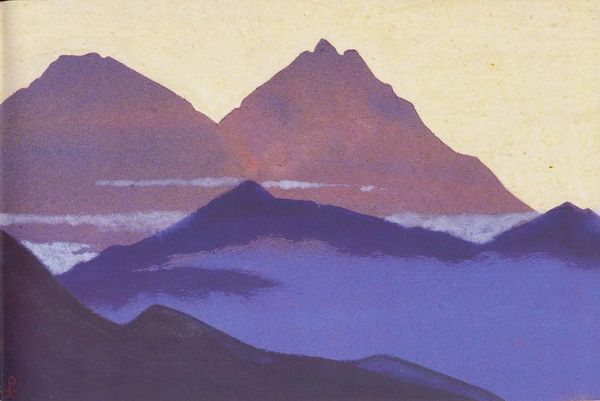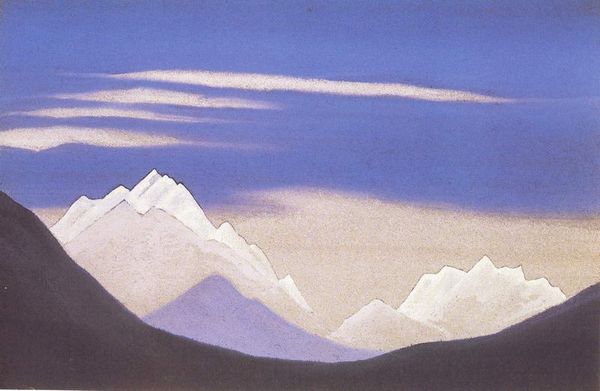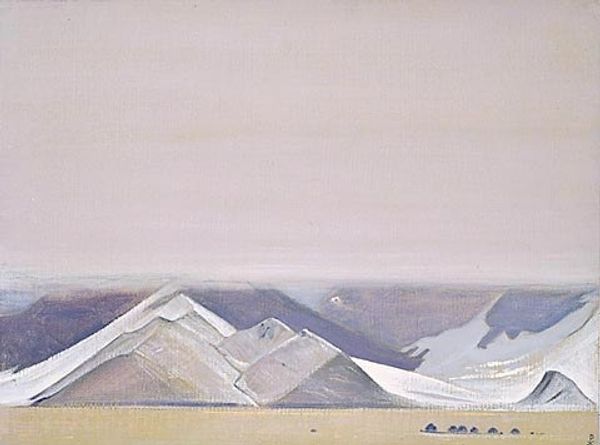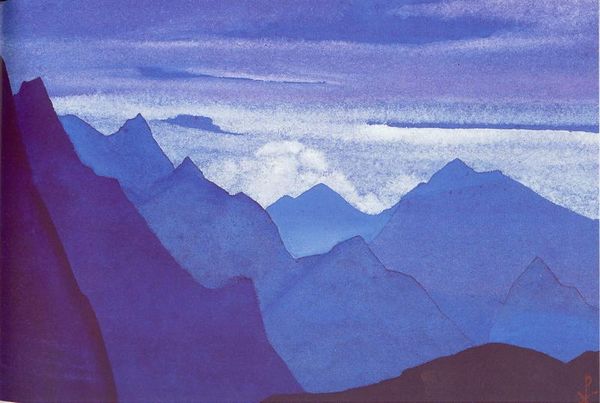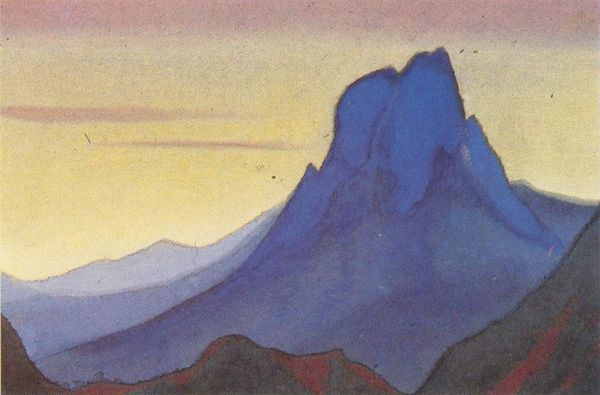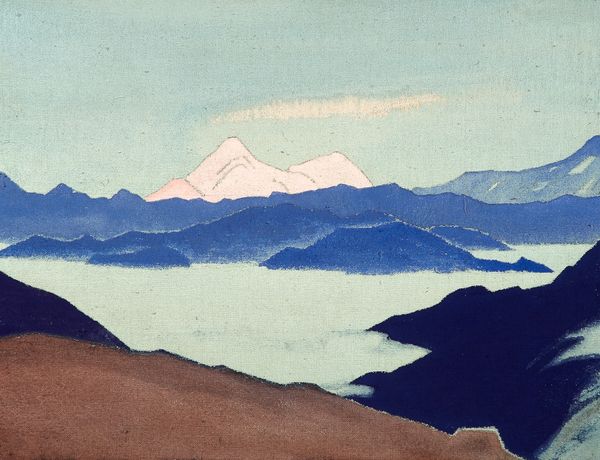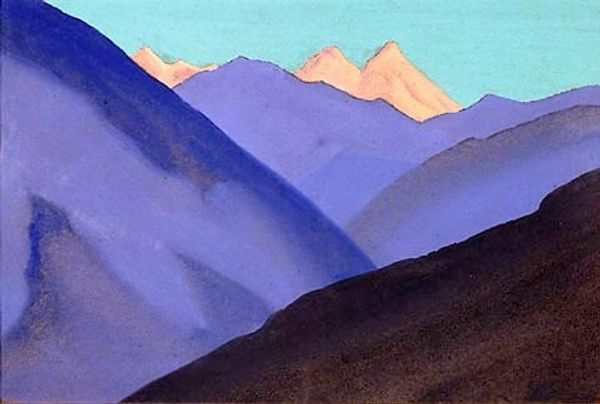
Copyright: Public domain
Editor: We're looking at "Jelep La, Tibetan Frontier" painted in 1936 by Nicholas Roerich, who used tempera on canvas. The hazy blues and purples give this mountainscape a mystical, almost otherworldly feel. What’s particularly interesting is how the bright yellow peaks in the distance dominate the entire scene despite their size. What do you see in this piece from a historical perspective? Curator: Roerich's work exemplifies the constructed "Orient" prevalent in early 20th century art, a view deeply intertwined with colonial power dynamics. He wasn't merely depicting a landscape; he was presenting a romanticized, spiritualized East to a Western audience. His involvement with the Theosophical movement definitely shaped his interpretation of the Himalayas, turning the range into a potent symbol. The question is, what kind of symbolism do you read in his landscapes? Editor: Well, the way the peaks glow suggests a divine presence or enlightenment. It feels idealized rather than like a straight depiction of the land. Do you think his connection with Theosophy and, perhaps, Russian nationalism played into this at all? Curator: Absolutely. Theosophy provided Roerich with a framework to project a universal spiritual narrative onto Tibet, sidestepping the complex realities of the region. We must recognize his work as being entangled with these imperial gazes, which often used such visual imagery as propaganda for Russia. Knowing the cultural context helps clarify this was less objective landscape and more loaded cultural interpretation, a symbolic "frontier". It reflects less about Tibetan culture and more about European cultural trends. Editor: It is really fascinating to see how landscape painting, usually seen as straightforward, can carry so much historical baggage and cultural projection. I'll certainly view landscapes differently going forward. Curator: Exactly! Questioning how socio-political forces shape even the most seemingly neutral artistic representations is key. Roerich definitely leaves us with much to think about.
Comments
No comments
Be the first to comment and join the conversation on the ultimate creative platform.
